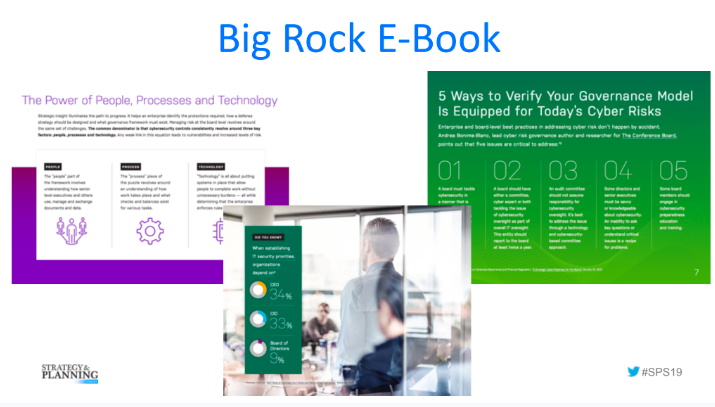Having a well-thought-out content plan for the New Year is essential to delivering a top-notch buyer and customer experience no matter where they are in their journey. During Demand Gen Report’s 2019 Strategy & Planning Series, a variety of experts from companies such as Content4Demand, ON24 and Uberflip shared tactical tips and best practices for making the most out of your content and engaging customers and buyers with the proper messaging to accelerate deals.
According to research from Bain & Co., a mere 5% improvement in customer retention can result in a 25% to 95% increase in profits. “So, if you’re wondering why you should focus on engaging your customer base, here’s the reason why,” said Tiffany Beddow, Director of Customer Marketing at ON24, during her presentation.
“Some small, incremental improvements can yield some big rewards. Ultimately, small improvements can drive customer retention and reduce churn.”
Beddow went on to share insights into creating a foundation and strategy for customer engagement during her session:
- Step into your customer’s shoes: “Start to think and empathize with customers and the experience they’re having with your brand. Talk to internal stakeholders and actual customers, and really understand — from when someone signs up with you to five years from now — what the experience is like for them and how are they interacting with different teams.”
- Align across the organization: “There are many stakeholders who are associated with the customers. Bring along anyone who touches the customer: customer success, product team, sales team, other marketing team members. Come together collectively and figure out what you’re trying to accomplish. Talk to see what others are doing so all goals are aligned.”
- Build your ideal customer journey as a guide: “A customer journey map is a visual representation of every experience your customers have with you. Work together with your team to develop it so everyone is aligned.”
Finally, put your journey map into action by identifying where your customers are interacting with you, what tools you have in your toolkit to drive action and make the experience seamless, and important triggers and milestones for your customers and for you.
Creating Bingeable Experiences To Accelerate The Buyer’s Journey

Having a finger on the pulse of who your customers are and how they like to be reached is the first step to building your content plan. The next step is to ensure you’re putting your content in front of the right audience and getting them to move along the journey from one piece of content to the next. This may sound like the job of a content marketer, but during his #SPS19 session, Uberflip’s Randy Frisch argued that ownership of content is on the demand marketer.
“[We must] shift our thinking when it comes to content,” said Frisch. “Content marketing doesn’t own content. The demand marketer, the digital marketer, the person orchestrating the buyer journey should own content.”
During the session, Frisch talked about the importance of providing buyers more than one piece of content at a time, but it’s critical that this “binging” experience doesn’t trail off into your competitor’s content.
“We are all locked into the infinite scroll,” said Frisch. “When we open our device and log into social media, we say we’ll just stick around for five minutes. Before we know it, we’re still in the app going from one piece of content to the next.”
However, delivering this type of binging experience can be risky, Frisch added. “What we risk is not keeping them on our content. We have to deliver experiences that lead people to content from us, not our competitors.” Marketers must avoid engaging with buyers with just one call to action that leads to one piece of content.
“One piece of content at a time is not enough,” said Frisch. “When people put together seven to 12 pieces of content, they do a good job at not overwhelming their audience. But they give them enough options where they felt that it was consumable and can start doing their research to accelerate their buyer journey. The more content we can get in front of someone, the more time they will spend with us and trust our team.”
Frisch shared three examples of companies delivering top-notch, “infinite scroll” experiences:
- Medtronic uses personalized email signatures in all outbound emails. “If someone clicks on it, they are dropped into a contextualized stream of content based on their segment,” said Frisch. “Each sales rep has their own stream.”
- Blackbaud segments audiences by revenue and persona then engages with them via email and AI. “When someone clicks on a call-to-action, they’re dropped into a single asset, but they also share seven to eight additional pieces of content to binge on after,” said Frisch. “They’re also using Uberflip’s AI engine to use third-party data input to understand what’s trending in their space.” The idea here is that they can alter what content is served next on the fly.
- Using LinkedIn ads, Snowflake directs target accounts to a dedicated stream of content built for that specific account. “They’re getting the attention of their audience by delivering highly targeted ads and they’re living up to expectations by dropping people who click on ad to a personalized stream of content,” said Frisch.
Developing A Content Strategy Around Repurposing

Having seven to 12 pieces of content for a specific audience may seem like a daunting task, but through content repurposing, marketers are able to develop multiple pieces of content from one “hero” asset. This was a key theme of Content4Demand’s session during #SPS19, in which Alicia Esposito and Tonya Vinas showcased a variety of ways to tackle content marketing in 2020 and beyond.
One suggestion is to develop a modular strategy, the “tried and true” process from a content strategy perspective, according to Esposito. She added that it comes down to two questions: How to get started from a planning perspective? And how do we make it a day-to-day practice to be nimble and scrappy?
Esposito suggests taking an existing “Big Rock” E-book or foundational asset (or creating a new one) and using it as the base for additional, shorter pieces of content. When creating a larger, foundational piece, design it from the beginning in a way that is can be broken down.
“[Start with a] ‘Big Rock’ E-book or foundation asset as a core component of your modular strategy because they are rich and can include additional components. Add stats, reframe best practices in the E-book and turn them into a blog. Branch this big piece into many different follow up pieces to promote engagement where the buyer is.”
Another option is to start from the bottom and “piece together smaller elements and figure out how to bring them together to tell a more comprehensive story,” said Esposito. For example, you can turn a series of blog posts into a white paper or integrate customer success videos into a case study portfolio.
Nasdaq, for example, had a lot of core white papers created in-house, but the company wanted more mileage out of them to drive lead generation and social interest. They needed to do it in a cost-effective and efficient way from a content creation perspective. Nasdaq turned to Content4Demand to help them take pages from the larger assets and re-use them for checklists, E-books and infographics.
“You have an opportunity to use what you have and bring it together to tell a story,” said Esposito. “Think about ways you can tell a consistent story across all of these pieces and re-spin them in as many ways as possible to maximize the reach and impact of your brand.”







